When it comes to treating objects, choosing the right tools can determine how successfully a conservation treatment is executed. Here in Preservation Services, at the State Library of Queensland, our lab is filled with weird and wonderful tools that assist in the conservation treatment of some of Queensland’s precious objects.
Conservation tools range from the humble eraser to surgical grade instruments and many things in-between! Since starting work at SLQ two years ago as an Assistant Conservator, I’ve found it very satisfying to collect and learn about different types of tools. For this blog post, I’d like to highlight some of my favourite tools and explain how they help me carry out conservation treatments here at SLQ.
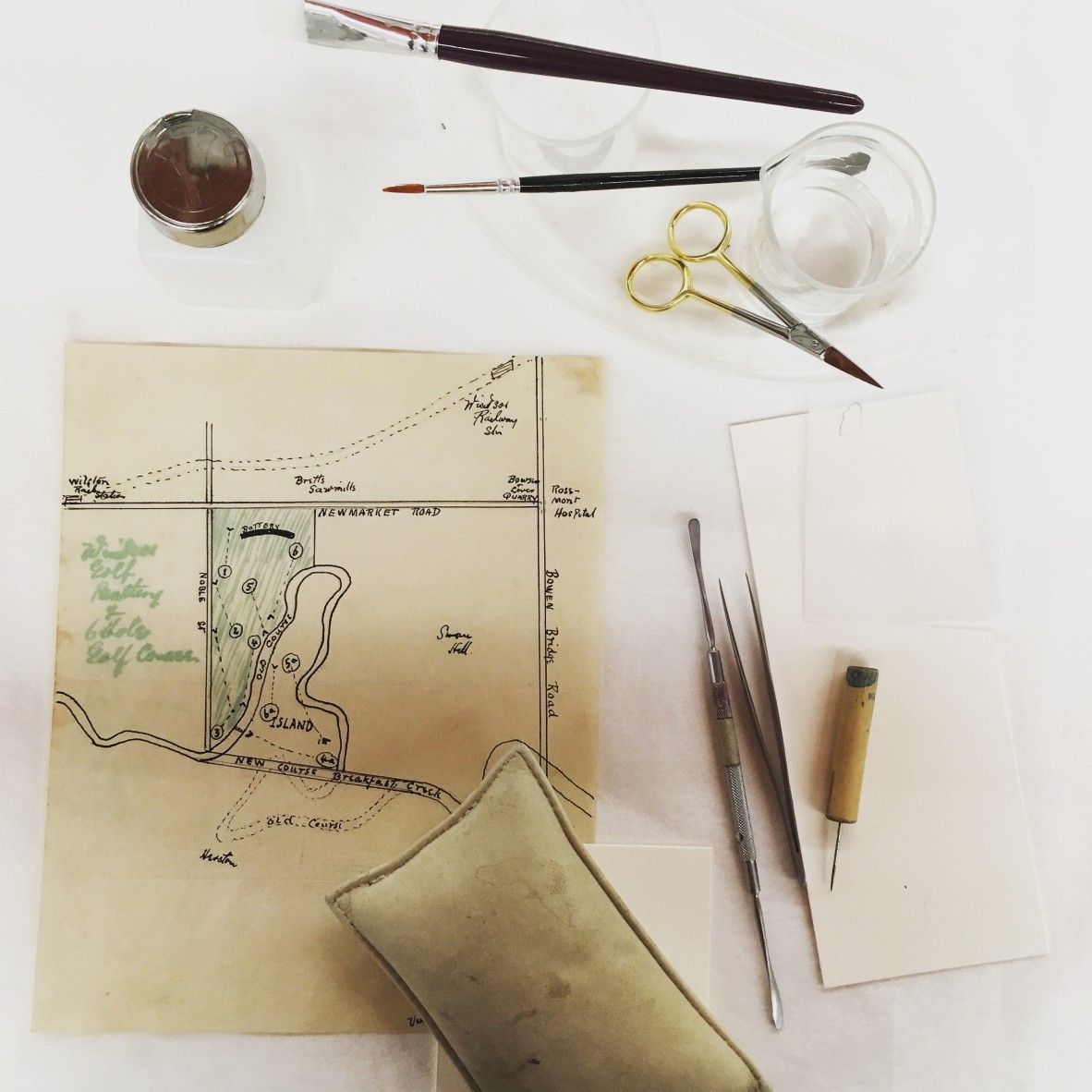
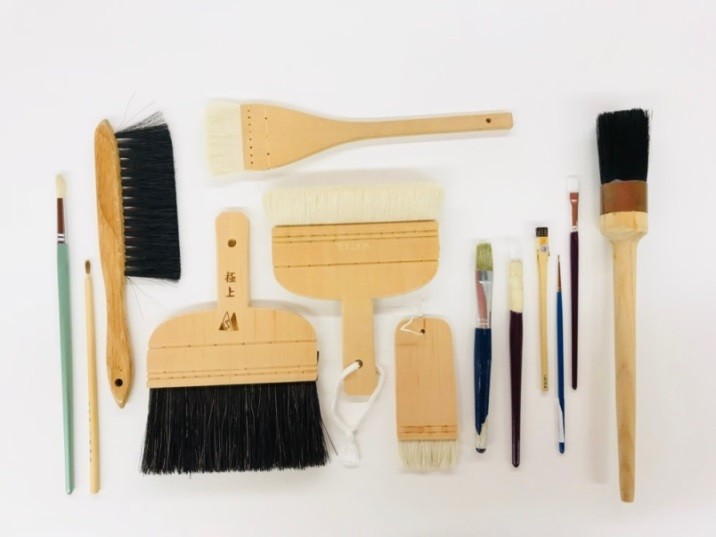
A brush for every occasion - tiny, fine paint brushes used for in-painting losses in photographs, paintings and paper objects. Soft, goat hair brushes for lining fragile paper objects with handmade Japanese tissue paper and coarse, bristled brushes used for applying adhesives when repairing old books.
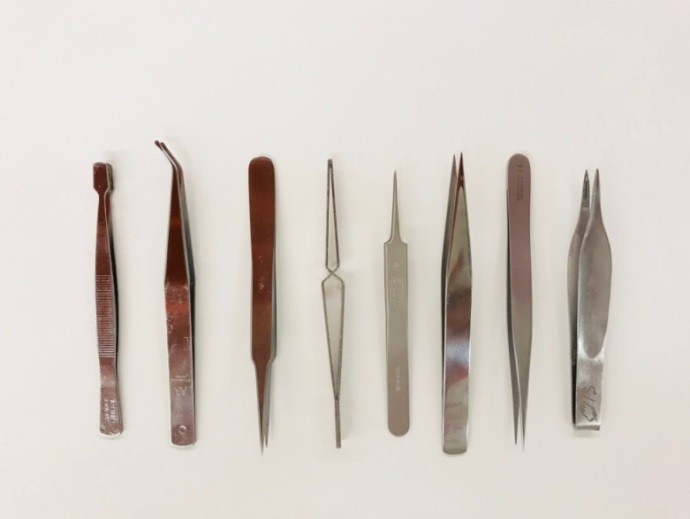
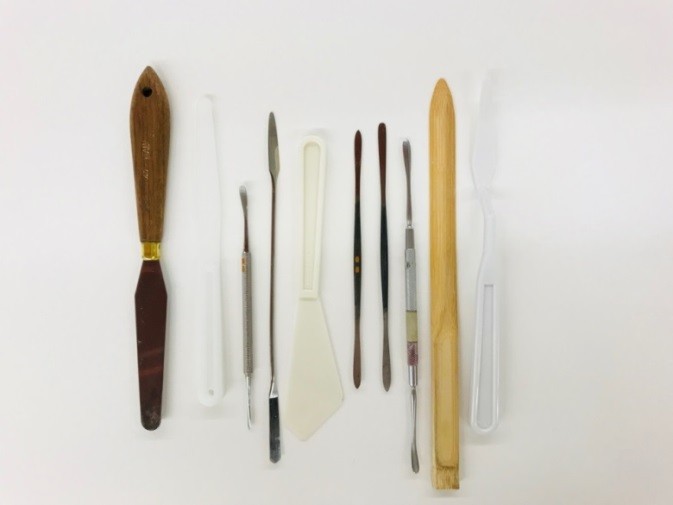
Spatulas made from stainless-steel, bamboo and plastic. The third tool from the right is called a septum elevator. Traditionally used in nose surgeries the septum elevator has become the paper conservator’s best friend and third hand. This multipurpose tool is used from anything to lifting and manoeuvring delicate object pieces to pressing down and securing recently applied tear repairs.
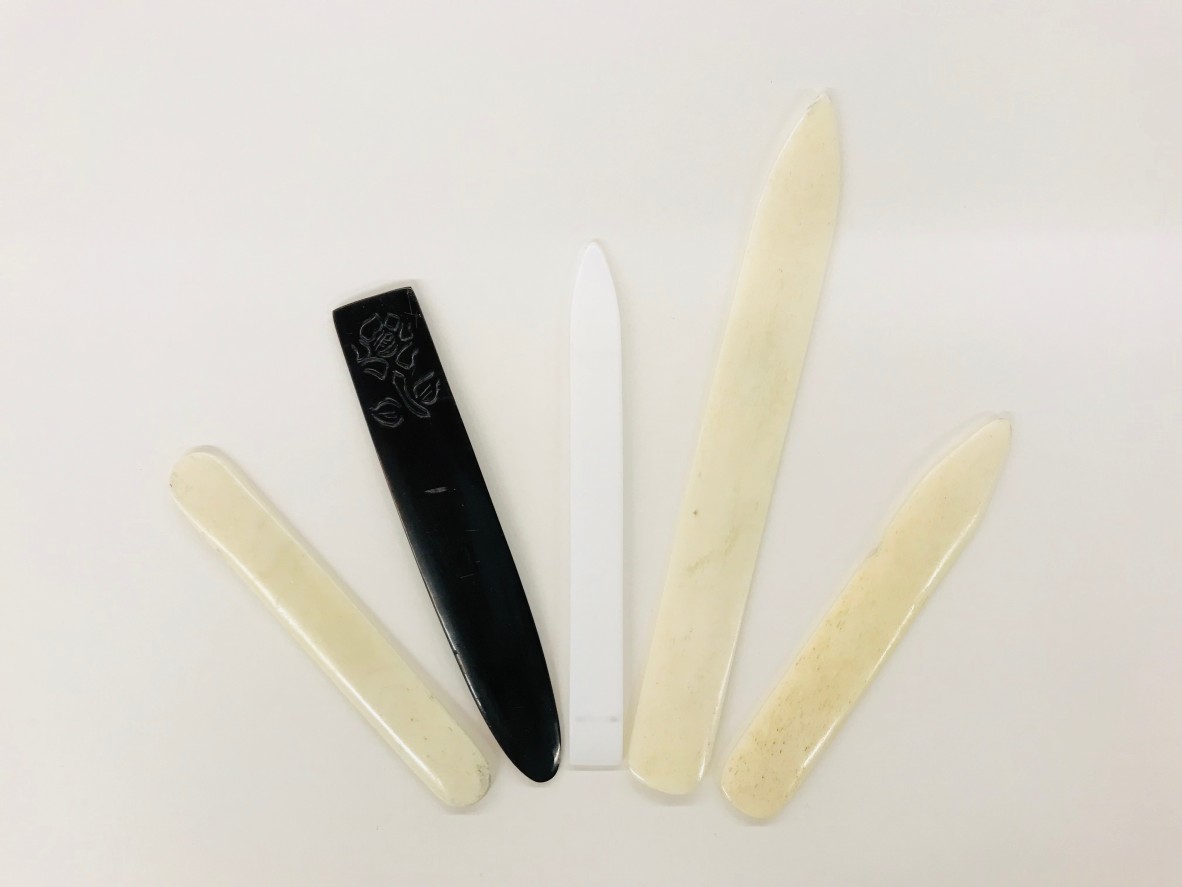
The bone folder. This tool is used to burnish, fold and crease materials like paper and corrugated board for box making. Commonly made from animal bone or horn, now many varieties exist made from Teflon, plastic and bamboo. Although I have choices galore when picking a bone folder to use, I only have eyes for one… the second to the right is my favourite.
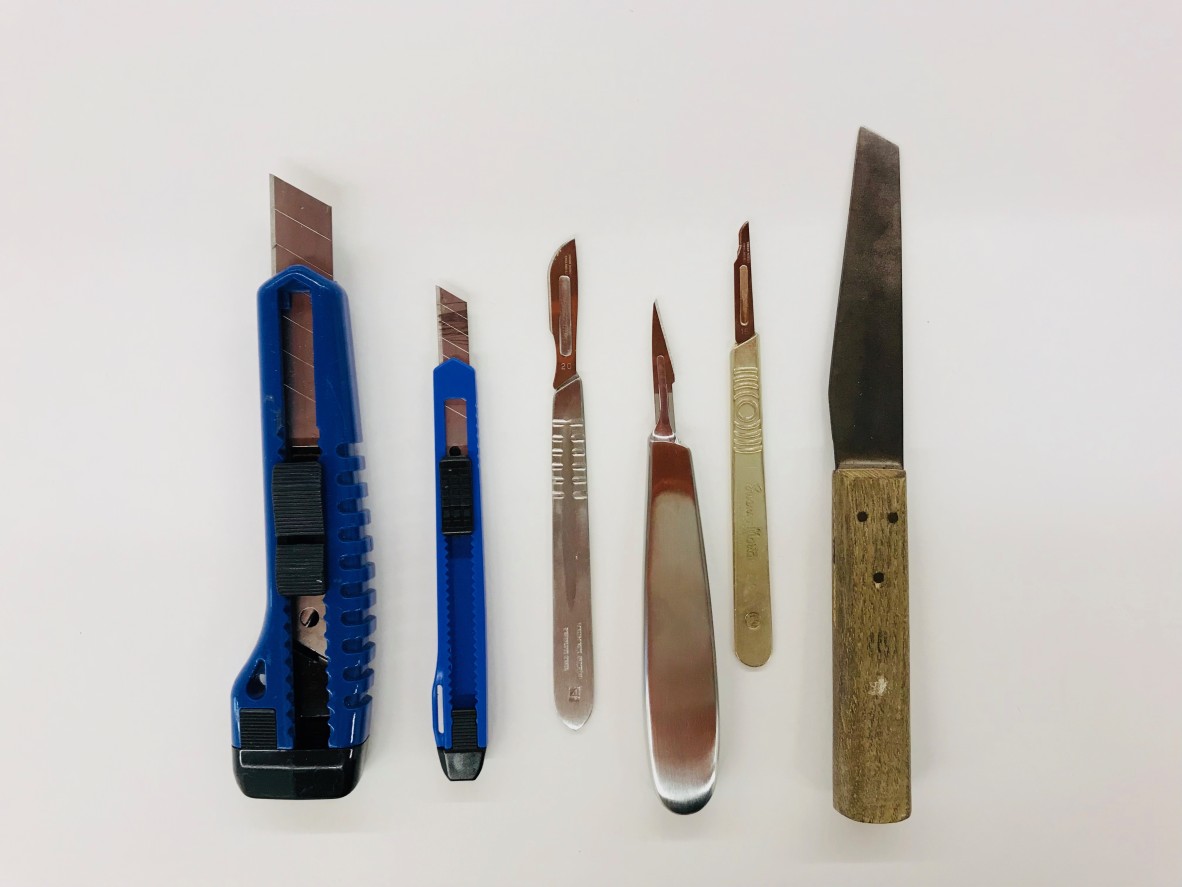
Blades of glory – with every shape or size of blade one could wish for. The large blue utility knife on the left is my go to for cutting through thick corrugated board, however for finer more precise work the third from the right has a fine tip scalpel blade which is perfect for trimming tear repairs.
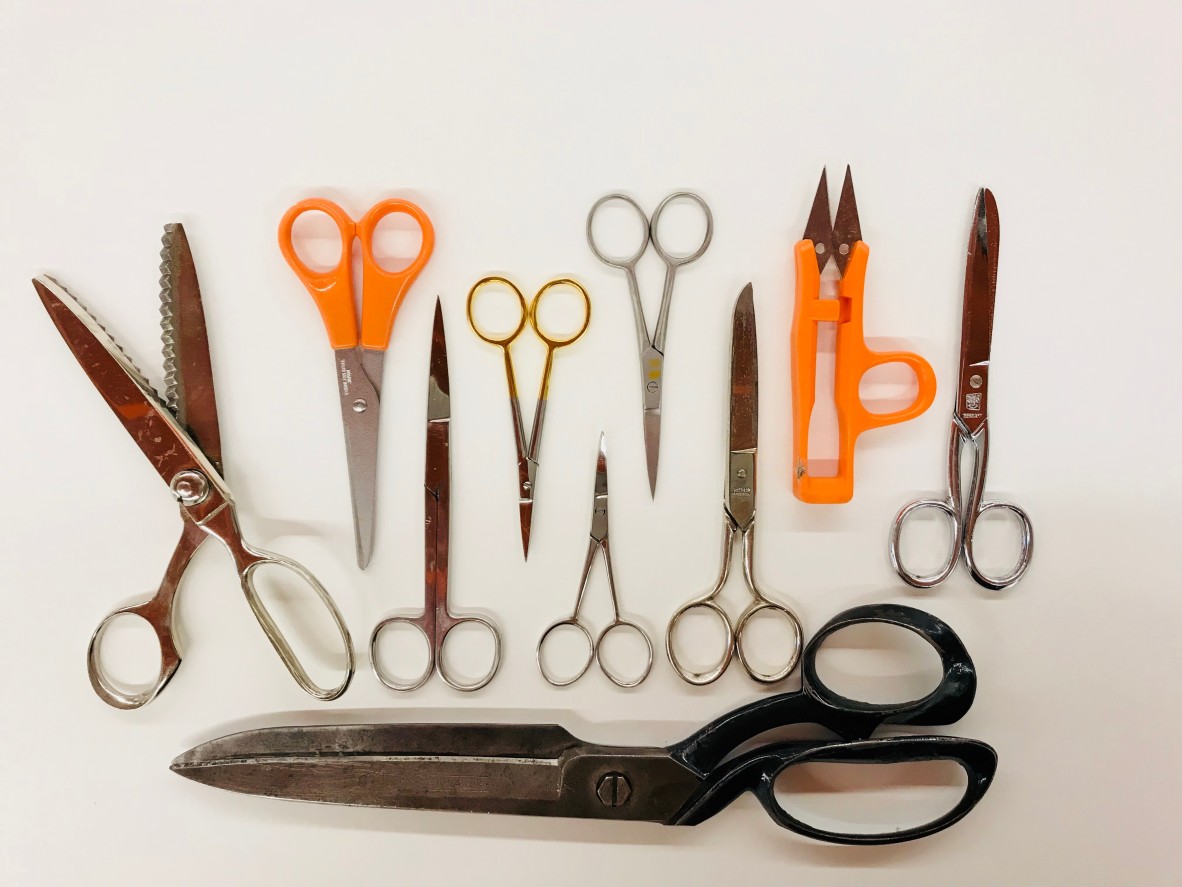
Conservators are constantly cutting things from fabrics to plastic and paper. A good pair of scissors goes a long way and can make work that little bit easier. The surprising favourites are the nail scissors. With either a curved or straight blade these fine scissors are ideal for trimming delicate areas and getting into small spaces where a standard pair wouldn’t even dare.
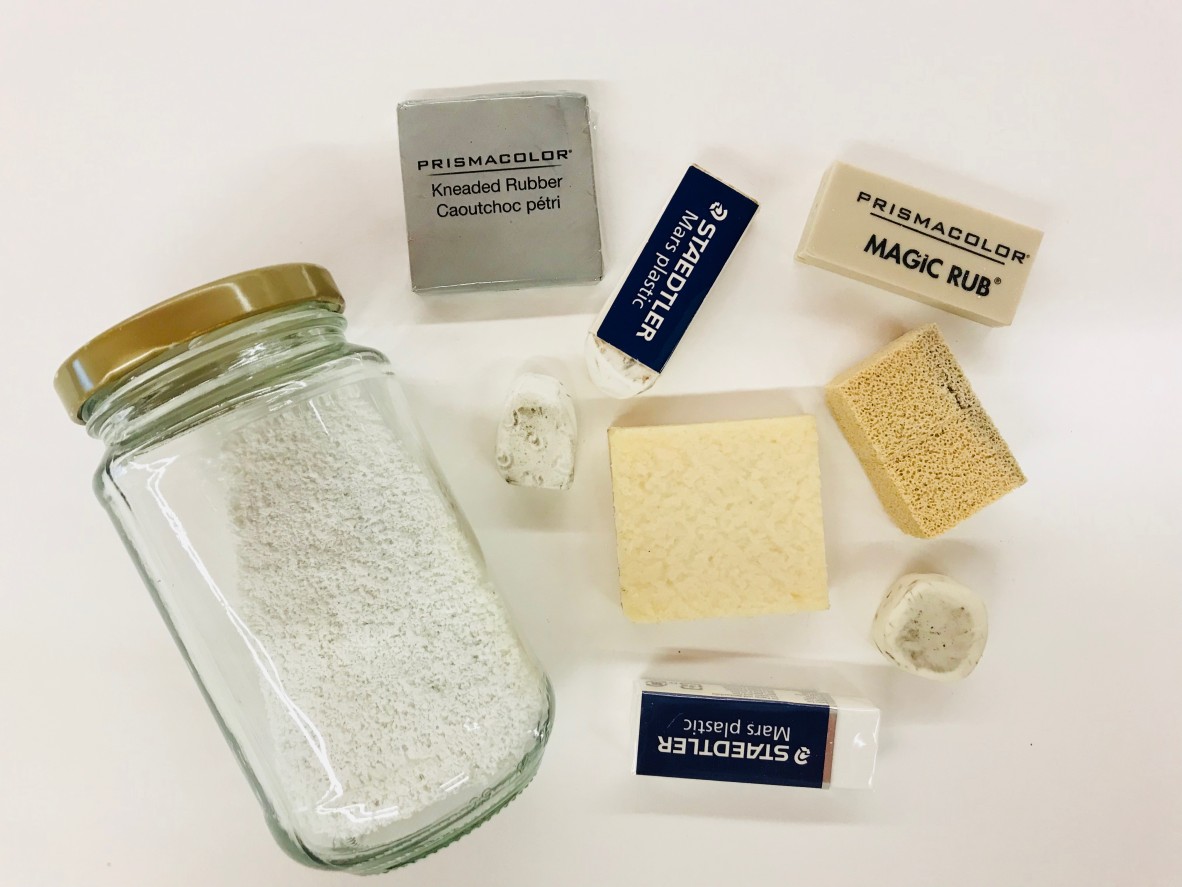
The above assortment of erasers are used for surface cleaning paper objects. Surface cleaning reduces the surface dirt on objects and is one of the first steps in the treatment of paper objects such as architectural plans, letters and prints. When cleaning a very delicate object grated eraser is used – and yes, we do grate the erasers by hand with a fine cheese grater! The fine pieces of eraser can be gently moved across the surface of an object for surface cleaning.
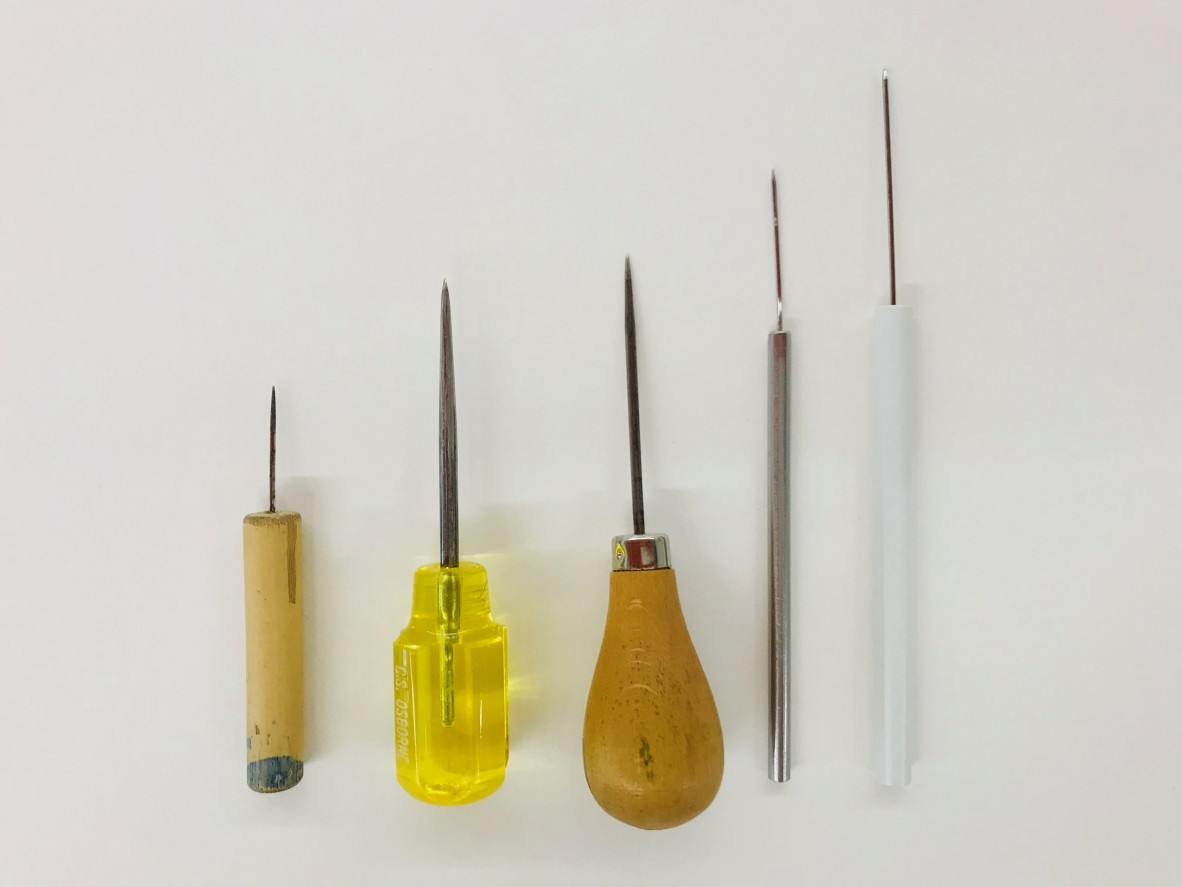
I have saved my favourite tool for last – the unassuming awl. This fine and pointy tool is very versatile and often I surprise myself with different ways of using it. My favourite awl is the first on the left. It was made just by sticking a needle into a piece of wood and it sits perfectly in my palm. One of the many functions of an awl is to precisely create infills for losses in paper objects. This is done by finely perforating the outline of the infill with the needle point.
So there you have it, my favourite conservation tools! These tools have been become my reliable companions. They have been by my side and a third arm while treating some of Queensland’s precious objects at the State Library of Queensland.
-Laura Daenke, Conservation Technician, Preservation Services-
Comments
Your email address will not be published.
We welcome relevant, respectful comments.